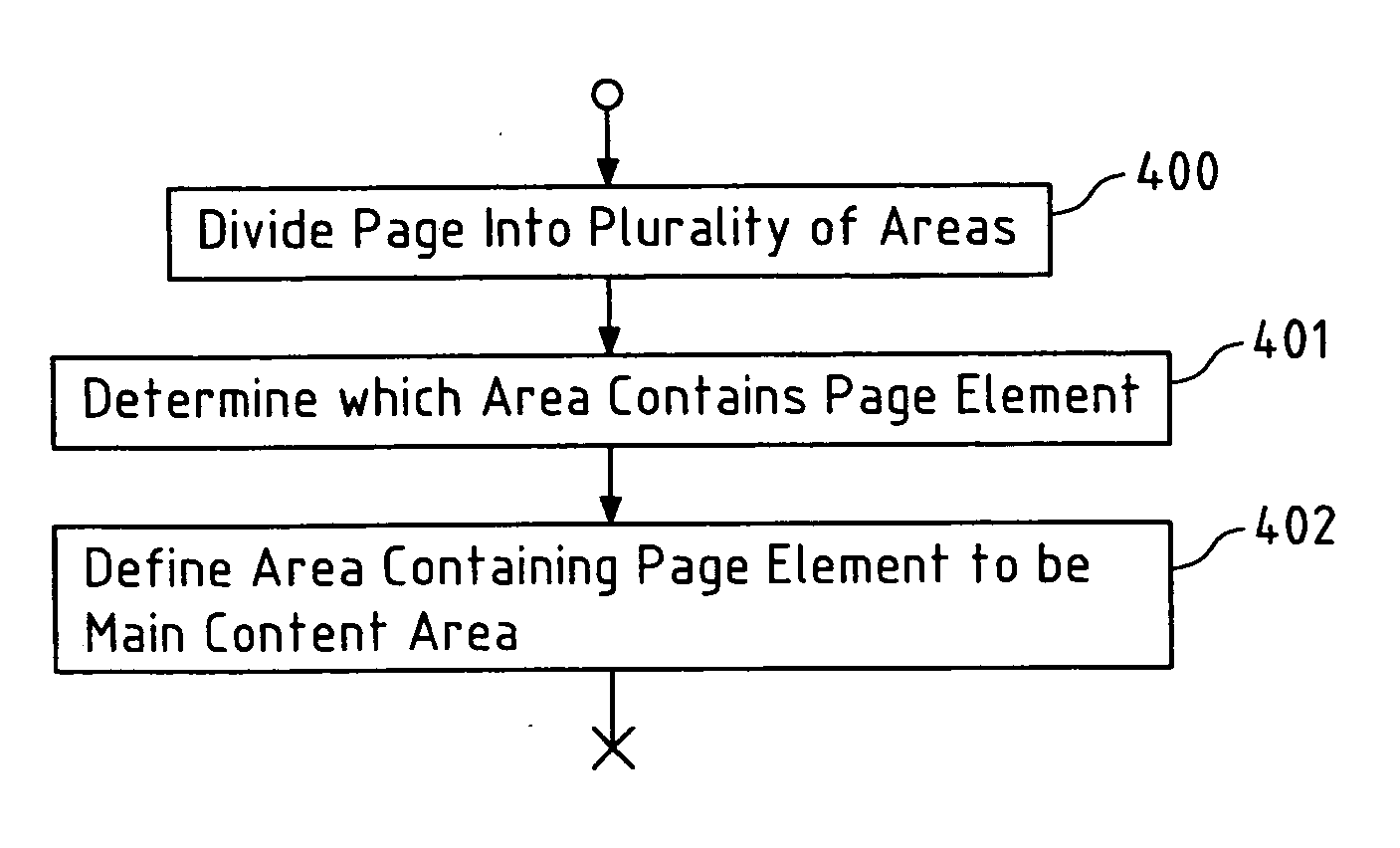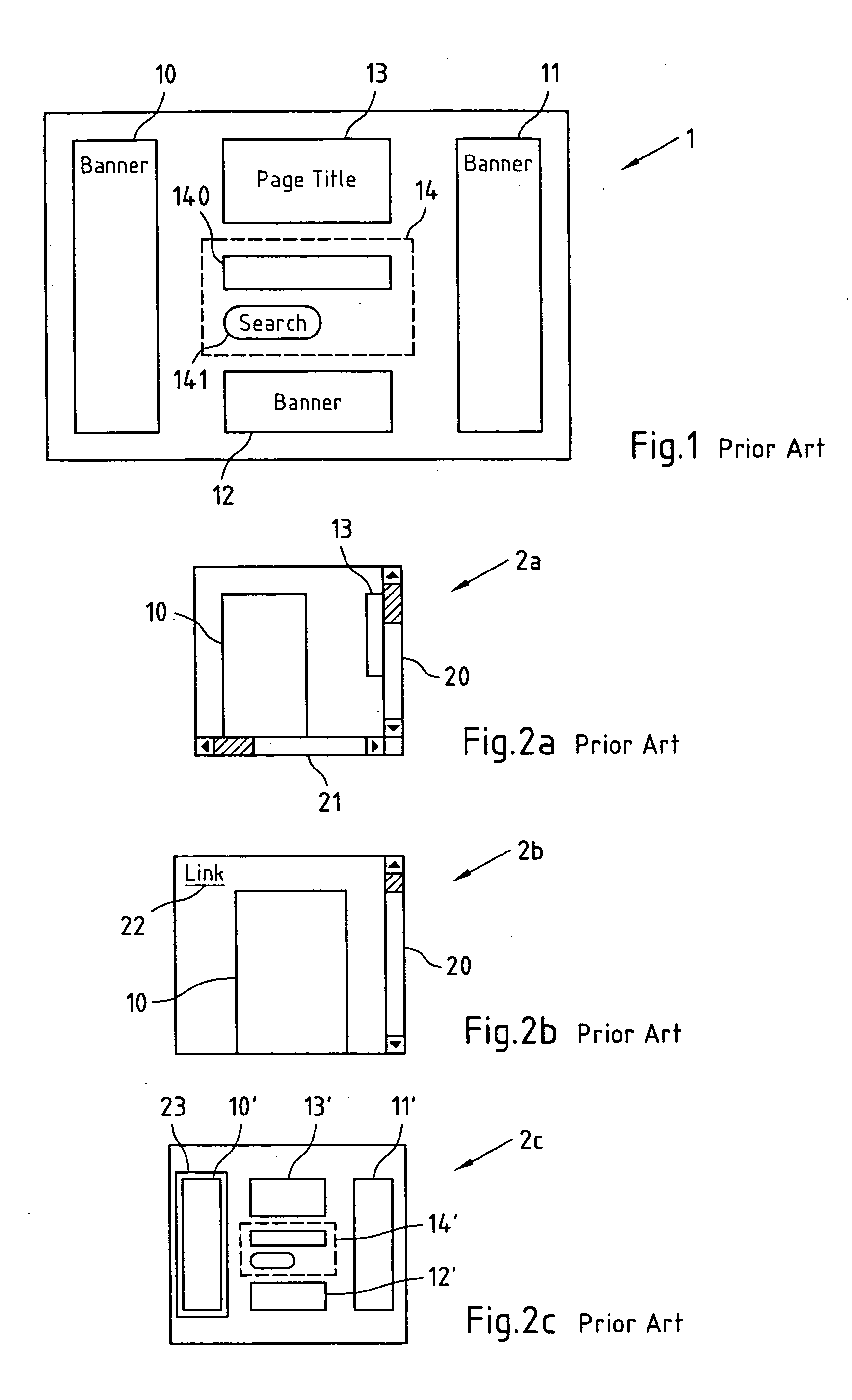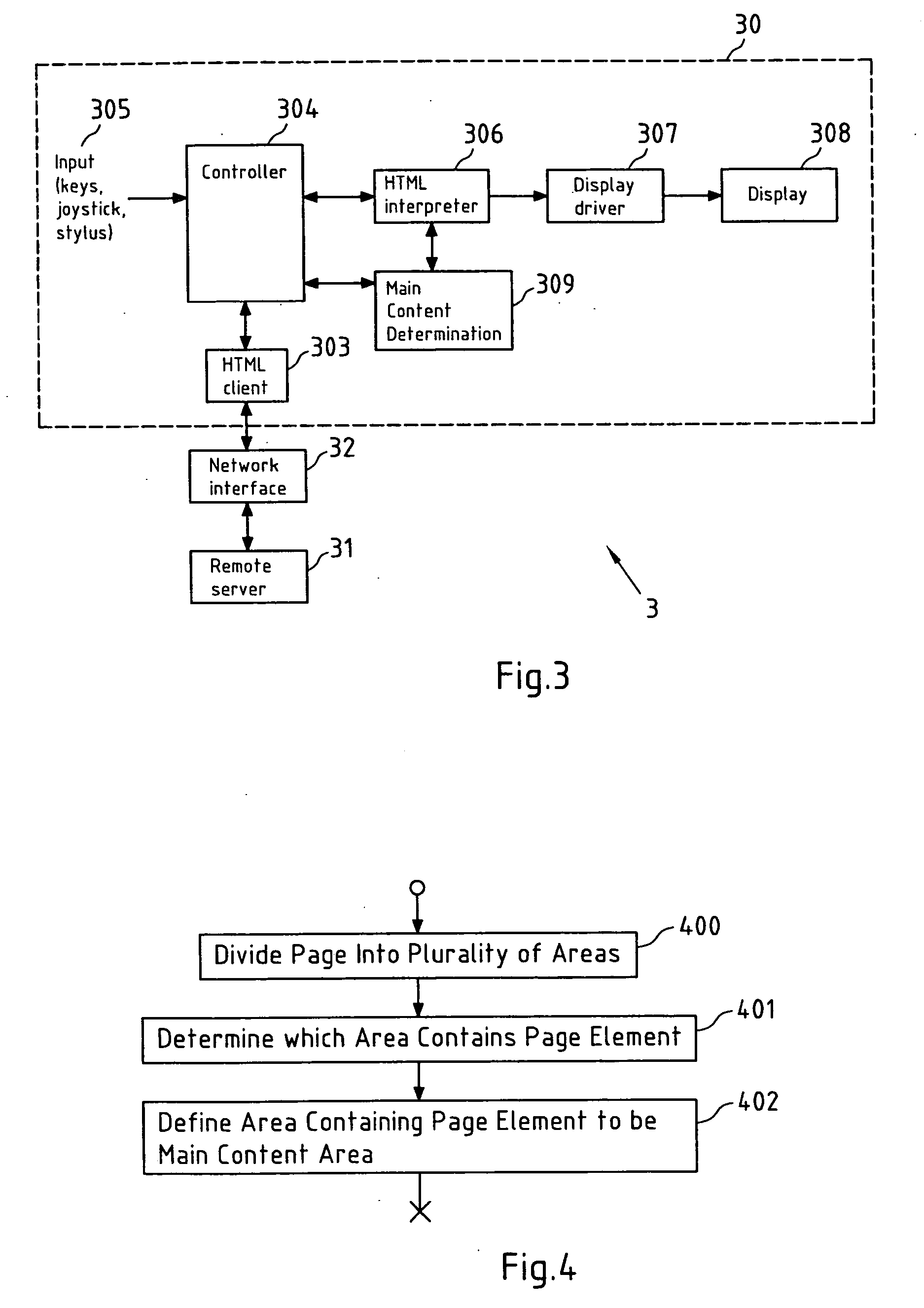Determining a main content area of a page
- Summary
- Abstract
- Description
- Claims
- Application Information
AI Technical Summary
Benefits of technology
Problems solved by technology
Method used
Image
Examples
Embodiment Construction
[0061] The present invention proposes a new method for determining a main content area of a page, which method is not based on the structure or format of a page, and simply determines which area of said page contains a page element that is substantially centered in said page with respect to one direction and offset by a pre-defined distance from a border of said page with respect to an orthogonal direction to be a main content area. This concept is suited to determine main content areas for a variety of different page types and shall by no means be limited to the deployment in the context of web pages only, which will be considered in this detailed description of the invention.
[0062] Furthermore, it should be noted that the description in the introductory part of this specification may be used to support this detailed description of the invention.
[0063]FIG. 3 depicts a network 3 comprising a terminal 30, a remote server 31, and a network interface 32. Pages that are stored on said...
PUM
 Login to View More
Login to View More Abstract
Description
Claims
Application Information
 Login to View More
Login to View More - R&D
- Intellectual Property
- Life Sciences
- Materials
- Tech Scout
- Unparalleled Data Quality
- Higher Quality Content
- 60% Fewer Hallucinations
Browse by: Latest US Patents, China's latest patents, Technical Efficacy Thesaurus, Application Domain, Technology Topic, Popular Technical Reports.
© 2025 PatSnap. All rights reserved.Legal|Privacy policy|Modern Slavery Act Transparency Statement|Sitemap|About US| Contact US: help@patsnap.com



